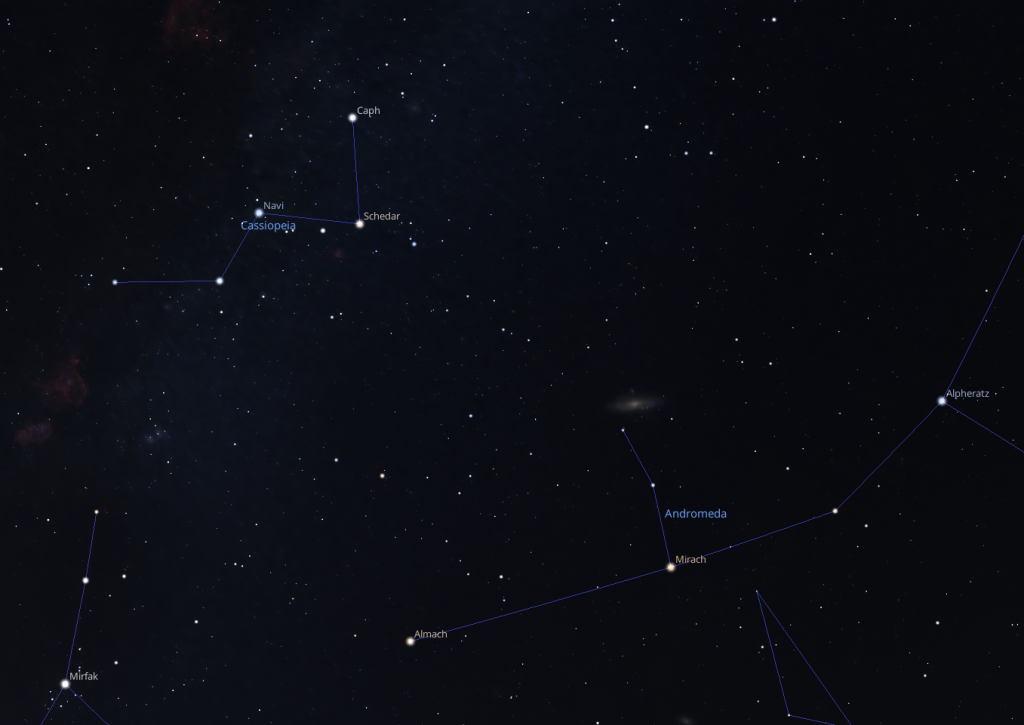Throughout July our days will finally begin to shorten, and we will get slightly more time to view our lovely Irish night skies. We have made it past the Summer Solstice and at the beginning of July we will see sunset just before 10pm and sunrise after 5 AM. By the end of the month sunset will be at 9.30 PM and sunrise just before 6 AM. Ireland’s summer weather will hopefully afford us many clear nights throughout July, perfect for some evening stargazing. However, the nights are still very short and the astronomical twilight we have seen throughout June will persist for the beginning of the month.
The Planets
This month you can catch Saturn and Venus in the early morning/late night sky. At the beginning of July, Saturn will rise at around 1.30 AM in the east, following by Venus at around 3.30 AM. By the end of the July you’ll see Saturn from around midnight onwards. They both stay visible until sunrise, so if you happen to be awake, have a look out for them. Saturn and Venus both shine very brightly, but particularly Venus which is the brightest object in the night sky other than the Moon.
The planets are quite distinctive compared to stars because they do not twinkle. This is because stars are very far away and the light from a star is coming from a tiny source that human eyes aren’t strong enough to fully make out. Atmospheric turbulence as the light passes through our atmosphere will give the illusion of a star twinkling. Planets do not share this phenomenon because they are much closer to us and therefore appear larger in our sky, so the light reflected off a planet will appear static and unchanging.
The Moon
The moon’s phases can provide different viewing experiences, from a new moon, which is ideal for stargazing, to a full moon, which can wash out faint objects but is a beautiful sight. We will have a full moon on July 10th and our next new moon on July 24th. The July full moon is sometimes known as the Buck Moon, which comes from this being the time of year when male deer’s antlers grow. The new moon will be the best time this month for dark-sky observing or astrophotography, if the weather cooperates.
Cassiopeia
If you do not want to stay up late to spot our bright planets Saturn or Venus, we still have all our stars to explore. Let’s focus on the constellation Cassiopeia in our Northern sky. Cassiopeia is easily recognisable by its distinctive “W” shape formed by five bright stars. Look northeast to find her throughout July. In Greek mythology, Cassiopeia was the queen of Aethiopia, married to King Cepheus, and mother to Princess Andromeda. She was known for her stunning beauty but also her vanity and arrogance. As a punishment for her vanity, Cassiopeia was placed in the sky as a constellation, forever sitting in a chair, sometimes appearing upside down, as a reminder of her pride. Located near the north celestial pole, Cassiopeia is a circumpolar constellation for observers in Ireland, meaning it never fully sets below the horizon and we see it all year long. It serves as a useful marker for locating the Andromeda Galaxy, which lies nearby in the sky.
Andromeda Galaxy (M31)
The Andromeda Galaxy (M31) is the closest spiral galaxy to the Milky Way and the largest galaxy in the Local Group. It is about 2.5 million light-years from Earth. To the naked eye, the Andromeda Galaxy appears as a faint smudge of light, but you will need a dark sky to see this so try to aim for a moonless night. Through binoculars or a telescope, it reveals more detail, including its bright core and spiral arms. The galaxy spans about 220,000 light-years in diameter and contains one trillion stars, more than twice the number in the Milky Way. Andromeda is on a collision course with the Milky Way. In about 4.5 billion years, the two galaxies are expected to merge, forming a new, larger galaxy often referred to as “Milkdromeda”. By using Cassiopeia as a guide, you can easily locate the Andromeda Galaxy and enjoy one of the most spectacular objects in the night sky. First, look for the W-shape of Cassiopeia in the north. Next, locate the star Schedar, the brightest star in Cassiopeia. Picture Scheder as the point of an arrow and follow it across to find Andromeda (see image).

July has exciting skies in store for us with the planets, the Moon, and countless stars to observe. If you capture any images, make sure you tag us on social media or email us. Wishing you starry skies!
Blog post written by Jane Dooley


